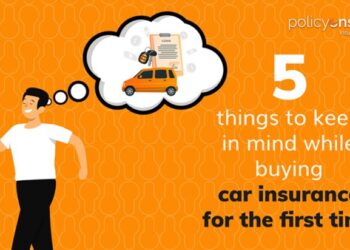Delving into Shop Auto Insurance for Teen Drivers: Save More Money, this introduction immerses readers in a unique and compelling narrative, with casual formal language style that is both engaging and thought-provoking from the very first sentence.
As we explore the realm of auto insurance for teen drivers, the quest to save money becomes a crucial aspect worth exploring. From understanding the key factors influencing costs to delving into coverage options, this topic sets the stage for informed decision-making in the realm of teen driver auto insurance.
Researching Auto Insurance for Teen Drivers
When it comes to insuring teen drivers, it is essential to research auto insurance options thoroughly to find the best coverage at an affordable rate. By exploring different insurance providers and comparing quotes, you can save money while ensuring your teen has adequate protection on the road.
Factors Influencing Auto Insurance Costs for Teen Drivers
- Age of the Teen Driver: Younger drivers typically face higher insurance premiums due to their lack of driving experience and higher risk of accidents.
- Driving Record: A clean driving record can lead to lower insurance rates, while accidents or traffic violations can result in increased premiums.
- Type of Vehicle: The make and model of the car being insured can impact insurance costs, with sports cars and luxury vehicles generally costing more to insure.
- Location: Where the teen driver lives and parks their car can affect insurance rates, with urban areas often being more expensive than rural areas.
Coverage Options for Teen Drivers
- Liability Insurance: Covers damages and injuries to others in an at-fault accident.
- Collision Coverage: Pays for damages to the teen driver's vehicle in a collision with another vehicle or object.
- Comprehensive Coverage: Protects against non-collision incidents like theft, vandalism, or natural disasters.
- Uninsured/Underinsured Motorist Coverage: Provides coverage if the other driver involved in an accident does not have insurance or sufficient coverage.
Strategies to Save Money on Auto Insurance for Teen Drivers

When it comes to auto insurance for teen drivers, finding ways to save money is essential. Whether it's through discounts, comparing rates, or understanding the impact on existing policies, there are strategies that can help reduce costs.
Qualifying for Discounts
- Many insurance providers offer discounts for teen drivers who maintain good grades in school. Encourage your teen to focus on their studies to potentially lower insurance rates.
- Completing a driver's education course can also lead to discounts on auto insurance premiums. Look for approved programs in your area.
- Consider enrolling your teen in a safe driving program to show insurance companies that they are committed to being a responsible driver.
Comparing Insurance Providers
- Take the time to research and compare rates from different insurance companies to find the best deal for teen drivers. Look for companies that specialize in coverage for young drivers.
- Consider bundling policies with the same insurance provider to potentially save money on premiums for the entire family.
- Ask about available discounts specifically for teen drivers, such as good student discounts or discounts for completing safe driving courses.
Adding a Teen Driver to an Existing Policy
- Adding a teen driver to an existing auto insurance policy can impact premiums, potentially increasing the overall cost. Speak with your insurance provider to understand how this change will affect your rates.
- Consider increasing your deductible to offset the higher cost of adding a teen driver to your policy. This can help lower monthly premiums while still maintaining coverage.
- Review your policy regularly to ensure you are getting the best rate possible for your family's needs, especially as your teen driver gains more experience on the road.
Understanding the Risks Associated with Teen Drivers
Teen drivers are considered high-risk by insurance companies due to their lack of experience on the road, leading to higher insurance rates. This is because statistics show that teen drivers are more likely to be involved in accidents compared to older, more experienced drivers.
Common Risky Behaviors Among Teen Drivers
- Speeding: Teen drivers are more prone to speeding, increasing the likelihood of accidents.
- Distracted driving: Activities like texting or using a phone while driving can lead to accidents.
- Not wearing seat belts: Teen drivers often neglect to wear seat belts, further increasing the risk of injury in case of an accident.
Statistics on Accidents Involving Teen Drivers
According to the CDC, motor vehicle crashes are the leading cause of death for teens in the United States.
- Teens aged 16-19 are three times more likely to be involved in a fatal crash compared to drivers aged 20 and older.
- In 2019, 2,375 teens in the U.S. aged 13-19 were killed in motor vehicle crashes.
- Teen drivers are more likely to engage in risky behaviors like speeding and impaired driving, leading to higher insurance premiums.
Choosing the Right Coverage for Teen Drivers
When it comes to insuring teen drivers, choosing the right coverage is crucial to ensure they are adequately protected on the road. Let's explore the different coverage options available and the pros and cons of each for teen drivers.
Liability Coverage
Liability coverage is essential for teen drivers as it helps cover the costs of damages and injuries they may cause to others in an accident. This type of coverage is typically required by law and helps protect teen drivers from financial liability.Pros:
- Covers damages and injuries to others
- Helps fulfill legal requirements
Cons:
- Does not cover teen driver's own vehicle damage
- Coverage limits may be insufficient in some cases
Example Scenario:If a teen driver causes an accident that results in injuries to the other party or damages to their vehicle, liability coverage can help cover the costs of medical bills, repair expenses, and legal fees.
Collision Coverage
Collision coverage helps pay for repairs or replacement of the teen driver's vehicle if they are involved in a collision with another vehicle or object, regardless of fault. This coverage is especially important for newer or more expensive vehicles.Pros:
- Covers repair or replacement costs for the teen driver's vehicle
- Provides peace of mind in case of accidents
Cons:
- Higher premiums compared to liability coverage
- Deductibles may apply
Example Scenario:If a teen driver gets into a single-vehicle accident where they collide with a tree or a guardrail, collision coverage can help cover the costs of repairing or replacing their vehicle.
Comprehensive Coverage
Comprehensive coverage protects teen drivers from non-collision incidents such as theft, vandalism, natural disasters, or hitting an animal. This coverage is beneficial for teen drivers with valuable vehicles or in areas prone to such incidents.Pros:
- Covers a wide range of non-collision incidents
- Provides added protection for teen drivers' vehicles
Cons:
- Higher premiums compared to other types of coverage
- Deductibles may apply
Example Scenario:If a teen driver's car is stolen or damaged by a hailstorm, comprehensive coverage can help cover the costs of replacing or repairing the vehicle.
Wrap-Up
In conclusion, navigating the landscape of auto insurance for teen drivers requires a strategic approach to both saving money and securing adequate coverage. By implementing the strategies discussed and understanding the risks associated with teen drivers, individuals can make informed choices that benefit both their finances and peace of mind.
Questions and Answers
Why are insurance rates higher for teen drivers?
Insurance rates are typically higher for teen drivers due to their lack of driving experience and higher likelihood of being involved in accidents. Insurance companies view them as high-risk drivers, hence the increased premiums.
How can teen drivers qualify for discounts on auto insurance?
Teen drivers can qualify for discounts on auto insurance by maintaining good grades, taking a defensive driving course, or being added to their parents' policy. These actions demonstrate responsibility and lower the perceived risk, leading to potential discounts.
What are the common risky behaviors among teen drivers?
Common risky behaviors among teen drivers include speeding, distracted driving (e.g., texting while driving), and driving under the influence of alcohol or drugs. These behaviors significantly increase the likelihood of accidents and impact insurance premiums.
When is collision coverage beneficial for teen drivers?
Collision coverage is beneficial for teen drivers in scenarios where they are at fault in an accident involving another vehicle. This coverage helps cover the cost of repairing or replacing their own vehicle, providing financial protection in such situations.
What does liability coverage offer for teen drivers?
Liability coverage offers financial protection in case a teen driver is found at fault in an accident that causes property damage or injuries to others. It helps cover the costs of legal fees, medical expenses, and property damage claims.













